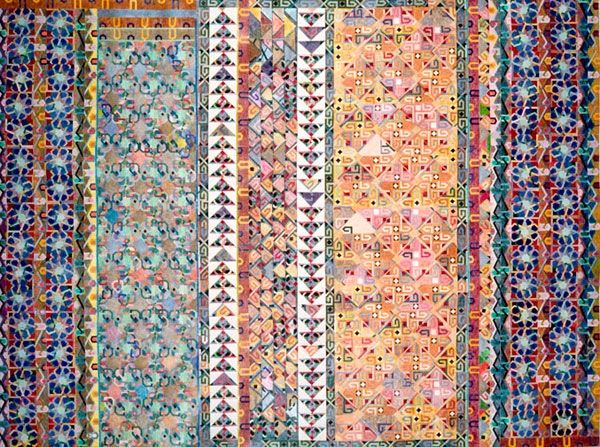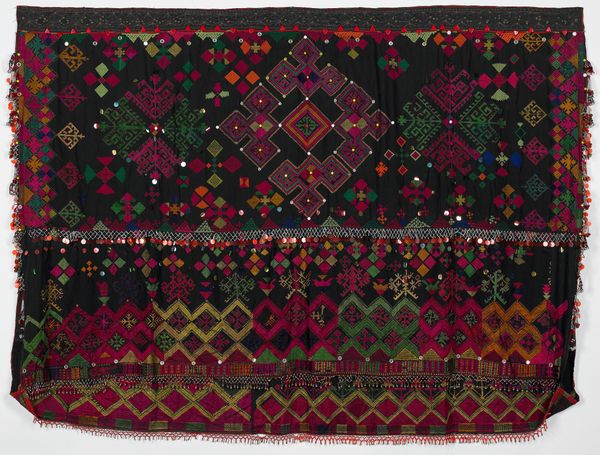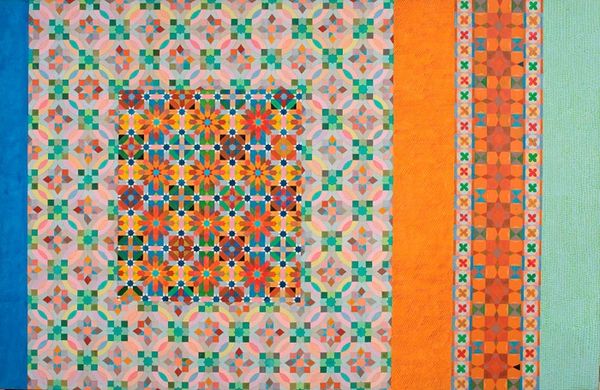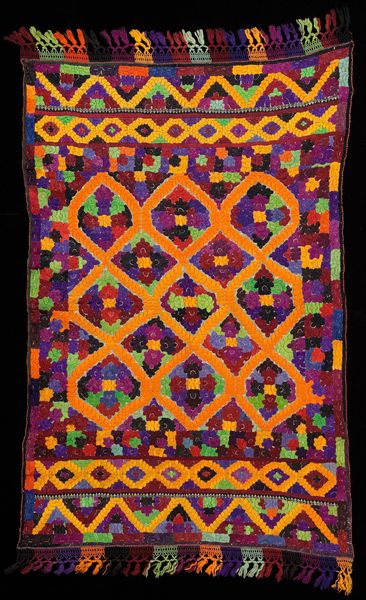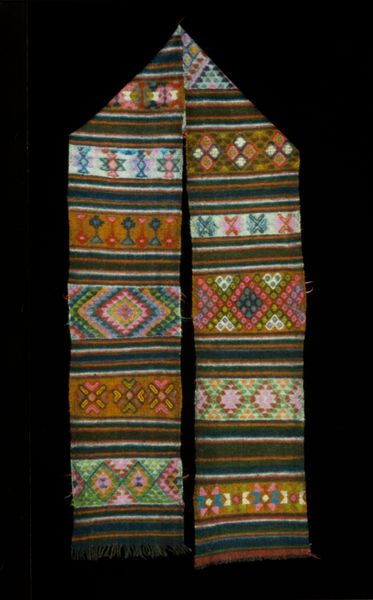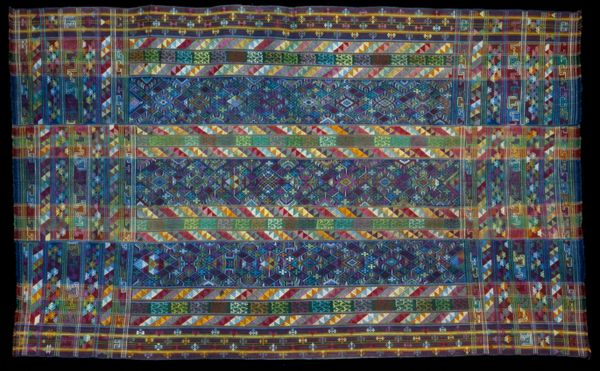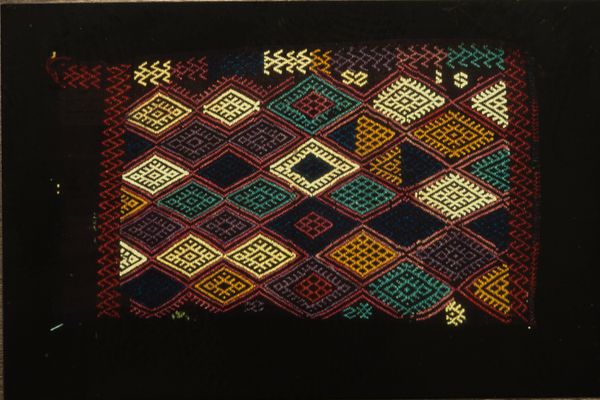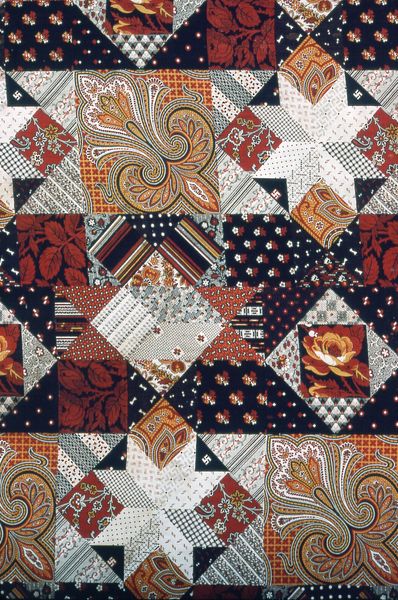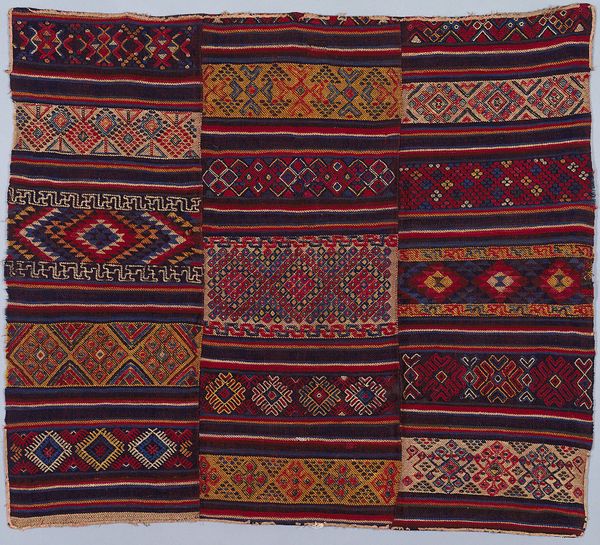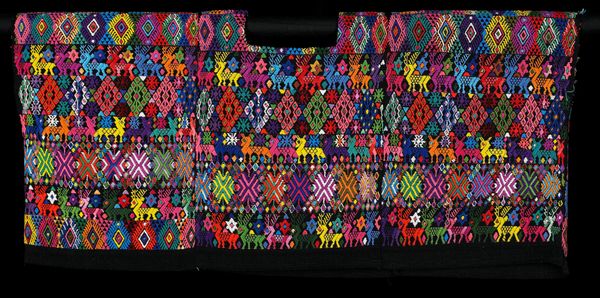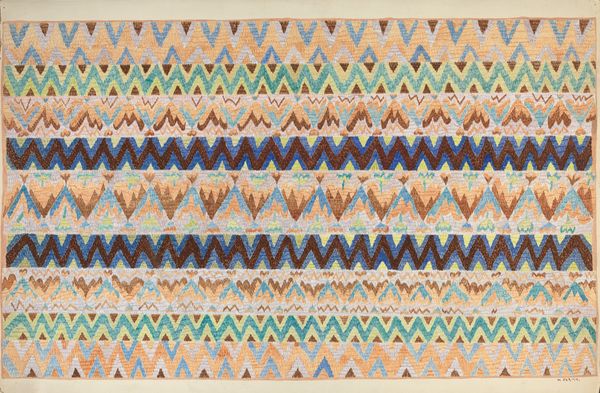
textile
#
pattern-and-decoration
#
natural stone pattern
#
pattern
#
geometric composition
#
textile
#
text
#
geometric pattern
#
abstract pattern
#
minimal pattern
#
organic pattern
#
repetition of pattern
#
vertical pattern
#
pattern repetition
#
layered pattern
Copyright: Joyce Kozloff,Fair Use
Curator: Standing before us is "Wainscot," a textile piece crafted by Joyce Kozloff in 1981. What are your first thoughts on encountering this artwork? Editor: It’s like stepping into a kaleidoscopic dream! A little dizzying, if I’m honest, but also deeply comforting, like being wrapped in a particularly vibrant, slightly eccentric grandma’s quilt. Curator: "Wainscot" draws from diverse art historical and cultural references, and Kozloff was deeply involved in the Pattern and Decoration movement which challenged the Western art world's dismissive attitude toward decorative arts, especially those traditionally created by women and non-Western cultures. Editor: Oh, I feel that rebellious spirit! It’s saying, "You think this is just pretty patterns? Think again!" Each panel is almost a world unto itself, bursting with its own logic and color story. Makes me want to just trace my finger along each shape. Curator: Indeed. Kozloff was explicitly engaging with architectural ornamentation. By isolating and re-presenting these patterns, she invites us to reconsider their aesthetic value and their often overlooked cultural significance, especially in relation to gendered labor. Editor: It's like she is giving these patterns a voice, pulling them off the wall and shouting, "Look at me! I have a history! I have meaning!" The layered pattern is a bold assertion of that meaning. It really plays with ideas of interior and exterior space, doesn’t it? Like, what does it mean to adorn our living spaces? What are we really saying when we choose a pattern for a room? Curator: Precisely. And by calling it "Wainscot," she’s directly referencing a form of interior architecture, implicating our own relationship to domestic space and its loaded histories. It certainly asks: whose stories and aesthetics get privileged in the construction of our environments? Editor: You know, it strikes me that art isn't just about what we see but also how we choose to see it, I'm ready to completely rethink my bathroom tiling now. Thank you, Joyce Kozloff. Curator: An important perspective that makes clear the importance of continuously engaging the critical lenses. Hopefully this piece encourages listeners to rethink the narrative we use to create and define our spaces.
Comments
No comments
Be the first to comment and join the conversation on the ultimate creative platform.

